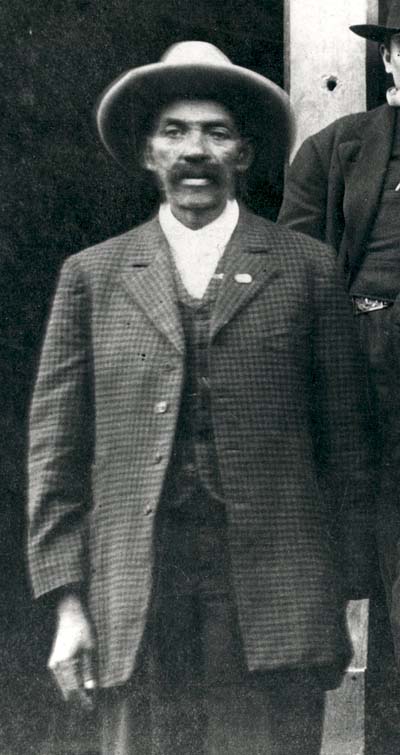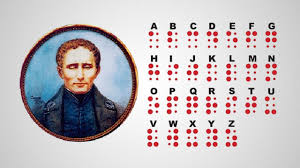Brrrr….It’s mid-February here at The Storage Inn in Egg Harbor Township, New Jersey, and the weather is chilly. This, however, has not stopped our faithful storage customers from visiting their storage rental spaces – some retrieving winter items, and some optimists beginning to move warm weather items to the front of their self storage units. We’ve already celebrated Groundhog Day, and Valentine’s Day, but I was reminded by one of our storage customers that the whole month of February is dedicated to black history.

As I thought about what she said, it occurred to me that many folks’ knowledge of black history is limited to high-profile historic figures like Frederick Douglass, Rosa Parks, Martin Luther King Jr. and Barack Obama. Being the curious type, I did a little digging and came up with some lesser-known facts about black history…
Before there was Rosa Parks, there was Claudette Colvin
It was March 2, 1955, when the fifteen-year-old schoolgirl refused to move to the back of the bus, nine months before Rosa Parks’ stand that launched the Montgomery bus boycott. When the bus driver ordered Claudette to get up, she refused. Why has Claudette’s story been largely forgotten? At the time, the NAACP and other Black organizations felt Rosa Parks made a better icon for the movement than a teenager. As an adult with the right look, Rosa Parks was also the secretary of the NAACP, and was both well-known and respected – people would associate her with the middle class and that would attract support for the cause. But the struggle to end segregation was often fought by young people, more than half of which were women.
Martin Luther King Jr. improvised his “I Have a Dream” Speech
On Wednesday, August 28, 1963, over 250,000 Americans united at the Lincoln Memorial for the final speech of the March on Washington. As Martin Luther King Jr. stood at the podium, he eventually pushed his notes aside.

The original speech was more political and less historic, and it did not include any reference to dreams. After delivering the now famous line, “we are not satisfied, and we will not be satisfied until justice rolls down like waters and righteousness like a mighty stream,” Dr. King transformed his speech into a sermon. Onstage near Dr. King, singer Mahalia Jackson reportedly kept saying, “Tell ‘em about the dream, Martin,” and while no one will know if he heard her, it could likely have been the inspiration for one of the greatest speeches in American history.
Inoculation was introduced to America by a slave
Onesimus was one of over a thousand slaves brought from Africa to the Boston area in the late 17th century. He was provided to a Puritan preacher by the name of Cotton Mather – a gift from his congregation.
Onesimus told Mather about the centuries old tradition of inoculation practiced in Africa. By extracting the material from an infected person and scratching it into the skin of an uninfected person, making them immune. Cotton Mather convinced Dr. Zabdiel Boylston to experiment with the procedure when a smallpox epidemic hit Boston in 1721 and over 240 people were inoculated.
Onesimus’ traditional African practice was eventually used to inoculate American soldiers during the Revolutionary War and introduced the concept of inoculation to the United States.
The earliest recorded protest against slavery was in 1688
Quakers, also known as “The Society of Friends,” have a long history of abolition. But it was four Pennsylvania Friends from Germantown who wrote the initial protest in the 17th century. It stated that regardless of skin color, “We should do unto others as we would have done onto ourselves.” In their protest they asked, “Pray, what thing in the world can be done worse towards us, then if men should rob or steal us away, and sell us for slaves to strange countries, separating husband from their wife and children….”

Over the centuries, this rare document has been considered lost twice. Most recently it was rediscovered in 2005 and is now at Haverford College Special Collections.
Of the 12.5 million Africans shipped to the New World, fewer than 388,000 arrived in the United States
The Transatlantic Slave Trade was underway from 1500-1866, shipping more than 12 million African slaves across the world. Of those slaves, only 10.7 million survived the dreaded Middle Passage. Over 400 years, the majority of slaves (4.9 million) found their way to Brazil where they suffered incredibly high mortality rates due to terrible working conditions. Brazil was also the last country to ban slavery in 1888.
By the time the United States became involved in the slave trade, it had been underway for two hundred years. The majority of its 388,000 slaves arrived between 1700 and 1866, representing a much smaller percentage than most Americans realize.
One in four cowboys was Black
In fact, it’s believed that the real “Lone Ranger” was inspired by an African American man named Bass Reeves. Reeves had been born a slave but escaped West during the Civil War where he lived in what was then known as Indian Territory. He eventually became a Deputy U.S. Marshal, was a master of disguise, an expert marksman, had a Native American companion, and rode a silver horse. His story was not unique however.

In the 19th century, the Wild West drew enslaved Blacks with the hope of freedom and wages. When the Civil War ended, freedmen came West with the hope of a better life where the demand for skilled labor was high. These African Americans made up at least a quarter of the legendary cowboys who lived dangerous lives facing weather, rattlesnakes, and outlaws while they slept under the stars driving cattle herds to market.
Esther Jones was the Inspiration for Betty Boop
Betty Boop was introduced by cartoonist Max Fleischer in 1930. The caricature of the jazz age flapper was the first and most famous sex symbol in animation. Betty Boop is best known for her revealing dress, curvaceous figure, and signature vocals “Boop Oop A Doop!” While there has been controversy over the years, the inspiration has been traced back to jazz singer Esther Jones who was known as “Baby Esther” and performed regularly in the Cotton Club during the 1920s. Baby Esther’s “baby style” did little to bring her mainstream fame and she died in relative obscurity but a piece of her lives on in the iconic character Betty Boop.
So, now you have some interesting facts that you can share with your family and friends regarding Black History Month, courtesy of The Storage Inn. Stay safe and hang in there – Spring is right around the corner!






 Benjamin Franklin (70) of Pennsylvania. The lead author of The Declaration, Thomas Jefferson, was 33.
Benjamin Franklin (70) of Pennsylvania. The lead author of The Declaration, Thomas Jefferson, was 33.
 was first read in public after people were summoned by the ringing of the Liberty Bell.
was first read in public after people were summoned by the ringing of the Liberty Bell. and Thomas Jefferson, who recommended the bald eagle.
and Thomas Jefferson, who recommended the bald eagle.
 That is what the name of it is. And when you’ve got it, you want–oh, you don’t know quite what it is you do want, but it just fairly makes your heart ache, you want it so!”
That is what the name of it is. And when you’ve got it, you want–oh, you don’t know quite what it is you do want, but it just fairly makes your heart ache, you want it so!” arrival is enough to get anyone through the bitter winter.”
arrival is enough to get anyone through the bitter winter.”

 the father-and-son hardware store downtown, these are the businesses that National Mom and Pop Business Owner Day honors. They’re not just great places to shop, they’re the backbone of the community.
the father-and-son hardware store downtown, these are the businesses that National Mom and Pop Business Owner Day honors. They’re not just great places to shop, they’re the backbone of the community.

 Not only is March Women’s History Month, but it’s also American Red Cross Month and Fire Prevention Month. It’s also National Nutrition Month. Other popular holidays are Read Across America (March 2, which is Dr. Seuss’ birthday), St. Patrick’s Day (March 17), Pi Day (March 14), Daylights Saving Day, Purim, and sometimes Easter even falls during the month.
Not only is March Women’s History Month, but it’s also American Red Cross Month and Fire Prevention Month. It’s also National Nutrition Month. Other popular holidays are Read Across America (March 2, which is Dr. Seuss’ birthday), St. Patrick’s Day (March 17), Pi Day (March 14), Daylights Saving Day, Purim, and sometimes Easter even falls during the month. Aquamarine and the bloodstone are the birthstones for March. Both stones stand for courage.
Aquamarine and the bloodstone are the birthstones for March. Both stones stand for courage.








 workshop. While playing, one of the tools struck him in the eye and the wound became infected. Eventually the infection spread to his other eye and he became completely blind by age five.
workshop. While playing, one of the tools struck him in the eye and the wound became infected. Eventually the infection spread to his other eye and he became completely blind by age five. cubic feet of space and weighs around 70 pounds. Harry Potter and the Goblet of Fire is 10 volumes in braille, and Webster’s Unabridged Dictionary is 72 volumes!
cubic feet of space and weighs around 70 pounds. Harry Potter and the Goblet of Fire is 10 volumes in braille, and Webster’s Unabridged Dictionary is 72 volumes!






